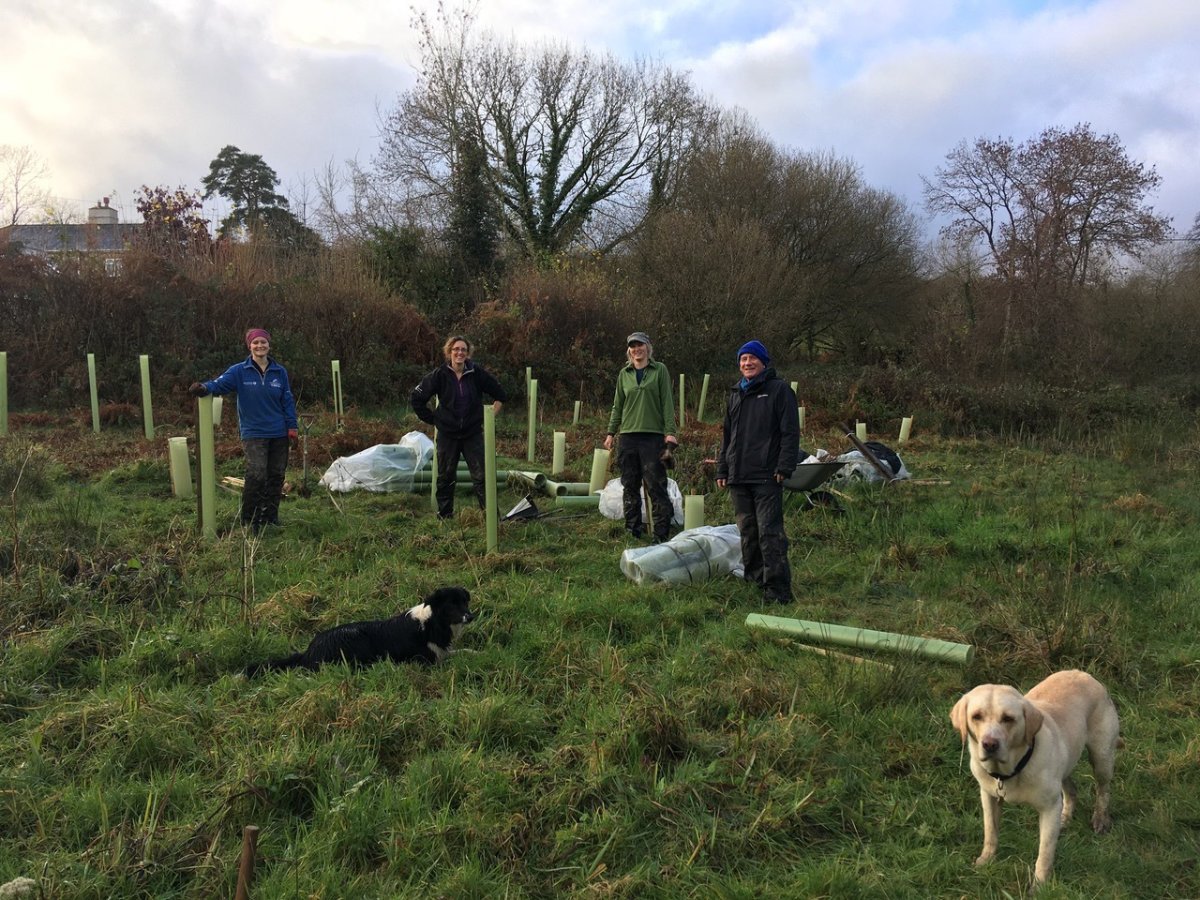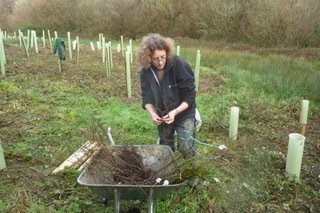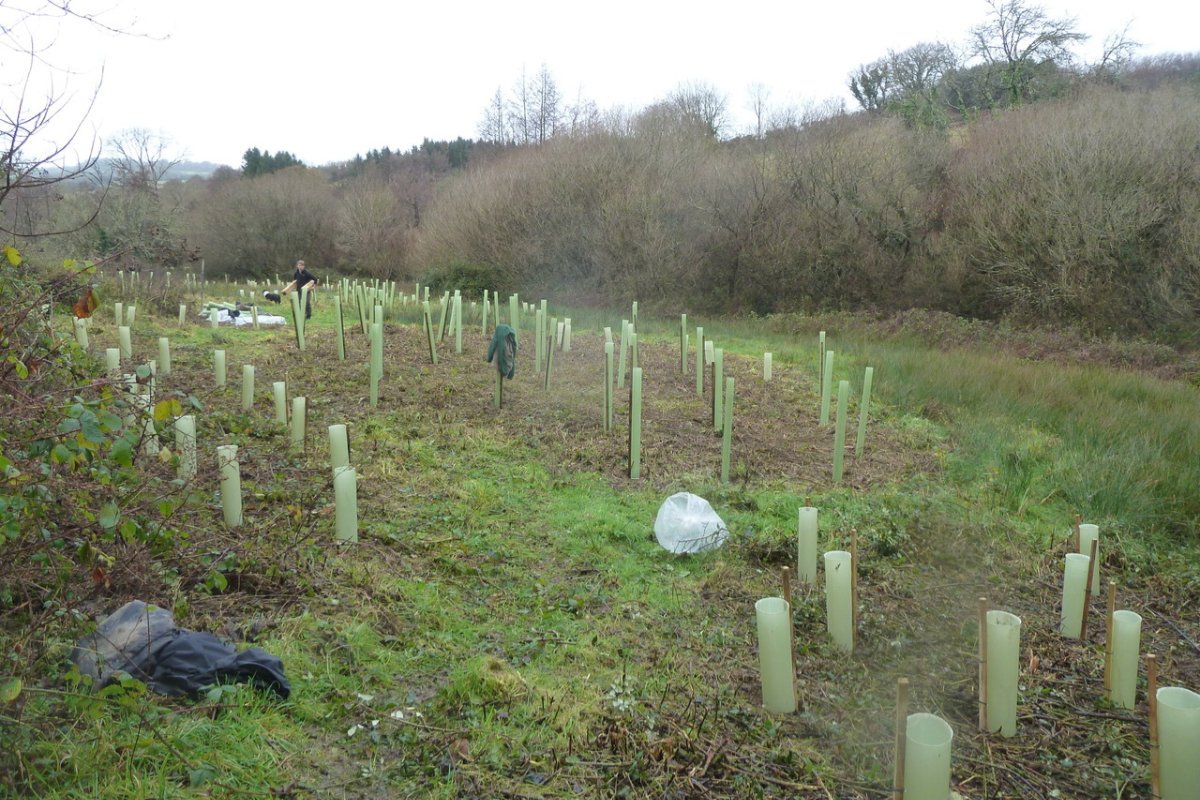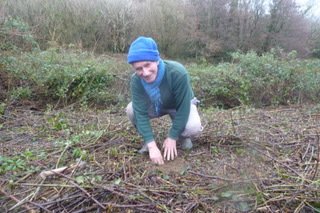
Local environmental charities are working to increase Devon’s tree populations. Simon Chater was delighted to take part.
For nearly 40 years I’ve lived in an old farmhouse in one of the loveliest spots in the South West – the valley of the Holy Brook, a tributary of the Dart. A livestock farmer sold me the house and a bit of land in 1982.
For decades I managed the land conventionally, allowing a local farmer to run his bullocks on it for little or no return. Then, in February last year I saw a newsletter article about grants for trees. That was the start of an exciting plan to rewild parts of my smallholding, linking them with similar areas belonging to my neighbours up and down the valley.
Activities on my land are the first in Phase 3 of Upstream Thinking, an award-winning project funded by South West Water and conducted, in the Dart catchment, in partnership with Devon Wildlife Trust and Westcountry Rivers Trust. Phase 3 aims to improve land management on over 8000 ha in the catchment by 2025, by such measures as planting trees, restoring the biodiversity of grassland and reducing the pollution risks from run-off. One sign of success will be increased numbers of the Marsh Fritillary, a beautiful but threatened butterfly species.
The project’s tree planting activity has three mutually reinforcing objectives: to improve water quality and management, to encourage biodiversity and wildlife, and to combat global warming. Planted on lower slopes and bottomland, the trees clean water and slow down its flow towards stream- and riverbeds, reducing erosion and downstream flooding. Grouped in belts or clumps, they form habitats and corridors for insects, birds and mammals, including butterflies, hedgehogs, bats, voles and deer, while leaving open spaces in between for wetland flora such as orchids to regenerate. In the medium to longer term the trees mitigate climate change and variability by storing atmospheric carbon.

“In environmental terms the project is a win-win-win,” says Jo Garlick, Working Wetlands Advisor with Devon Wildlife Trust. A unique feature is that it caters to the needs of small landowners, often excluded from conventional reforestation projects. For areas over 3 ha, trees and advice are sourced from the Forestry Commission, while the Woodland Trust fulfils the same function for areas as small as 0.5 ha.
“It doesn’t matter whether you’re a big land owner or a small one,” says Garlick. “Your land is important for providing habitats, and corridors that link them.”
Over the past five years Garlick and her colleagues have worked with over 200 landowners in the Dart catchment, including commercial livestock producers alongside small landowners and hobby farmers. For the commercial producer, the need to run an efficient business can give rise to difficult trade-offs against environmental objectives, the main problems being grazing availability and feed quality. Where trees are interspersed with pasture, livestock cannot be grazed conventionally for fear of damaging the young trees, so the only option is to cut for hay or silage. This can be done in late summer, after flowering – but by this stage the nutrient content is inevitably lower.
Yet Garlick is quick to stress that farming and wildlife go hand in hand: “Where you have diversity, you have a healthier farm,” she says. “For instance, hedging can reduce the incidence of tuberculosis in dairy herds. Across much of Devon, people trim their hedges annually, which costs time and money. Savings can be made by cutting only every three years, which benefits biodiversity and water quality as well as TB control.”

More analysis and discussion of the trade-offs and links between commercial production and environmental objectives is needed. Perhaps a future phase of the project could include a participatory research component, if this can be organized and funded.
Tree planting on my land was a great success, thanks largely to the skill, knowledge and energy brought to it by Garlick and her colleagues.
Soon after I contacted her, Garlick came out to have a look and share her expertise, then went away to make a plan. After consulting her colleagues she proposed no fewer than 14 tree species, 8 for wetland planting and 6 for drier areas, all of them native and attractive to wildlife. Then came the first COVID lockdown and, with Garlick on furlough, activities went on hold through the late spring and summer months. But in early autumn I was delighted to learn that the Woodland Trust had approved our request for trees.
On a damp day in November a trailer-load of bare-root plants, tree guards and stakes arrived in our yard – and I knew we were in business. A second walk-around with Garlick, accompanied by Devon Wildlife Trust’s habitat creations expert Simon Tomasso, provided us with advice on planting patterns and micro-ecologies. My neighbour Donna Cox, respected across the county for her work with Moor Meadows, also visited and provided insights, especially on the need to preserve and regenerate the floral diversity of my wetlands, themselves a threatened habitat. Our gardener Mark Griffiths leaped into action with his strimmer to clear areas that had been invaded by bramble. Meanwhile, Garlick got busy organizing volunteers: these had to be limited to six to comply with COVID restrictions, so we planned two planting days a week apart.
Voluntary work in the open air with like-minded souls is a uniquely happy-making experience. On both days the energy and enjoyment generated by our small team made sure we covered the ground fast while having fun – chatting to each other about voluntary work and the other things we did in life (while keeping our distance and taking care not to share tools). After a short lunch-break, taken outside to avoid breaking COVID rules, we quickly went back to work to make the most of the remaining daylight. By 3.30 pm on the second day, we had planted most of the 600 trees that had been provided.

Our two days of planting were among the most enjoyable I have ever spent here. It was wonderful, at last, to be doing something for this beautiful place. The trees will mature over 25 years, continuing to grow long after we have gone. They will be enjoyed by our successors here, as well as by wildlife. And the carbon they store will help to combat climate change.
Re-wilding, like charity, begins at home. I’m delighted that my home has played its part.
Afterword and Acknowledgements
Jo Garlick and her colleagues are keen to recruit more participants. If you have land that you think might be suitable and would like to find out more, why not get in touch with her at jgarlick@devonwildlifetrust.org
I would like to thank Devon Wildlife Trust, for superb planning and expertise; the Woodland Trust, for providing the trees; and South West Water for funding the project.




